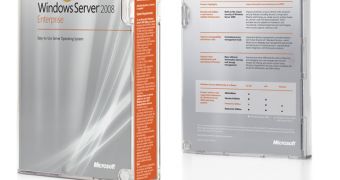When it comes down to securing sensitive data, Windows Server 2008, via Microsoft Active Directory Rights Management Services (RMS), will integrate closely with RSA’s DLP Suite 6.5, as of later this month. The move is an integral part of a much wider strategy of the Redmond company to help customers not only boost the protection of their sensitive information, but also to increase security when sharing such data. In this regard, Microsoft announced an expansion to the technology partnership inked with EMC, focused on catalyzing the evolution of information protection and data loss prevention.
“Our expanded partnership with EMC’s RSA Security Division is centered on dramatically lowering the cost and complexity of information protection, while allowing customers to take full advantage of perhaps their greatest asset: their information. The approach is about built-in solutions, versus bolted-on,” revealed Douglas Leland, general manager of the Identity and Security Business Group at Microsoft.
“This collaboration is also a key example of the Microsoft commitment to helping customers secure their environments, boost productivity, and reduce IT costs through solutions that incorporate both identity and security technologies.”
The Redmond giant indicated that it was ready to make the RSA Data Loss Prevention classification technology a part of its software solutions. In this context, Microsoft's future platforms and information protection products will integrate resources developed by RSA, the Security Division of EMC.
“Companies continue to struggle to protect sensitive data across the enterprise,” added Christopher Young, senior vice president of products at RSA. “Point solutions require that multiple policies and technologies be stitched together and independently managed, which is costly and complex. By building technology solutions such as RSA DLP classification into the infrastructure, Microsoft and RSA are providing a new approach that balances the need to help ensure protection with accessibility.”

 14 DAY TRIAL //
14 DAY TRIAL //